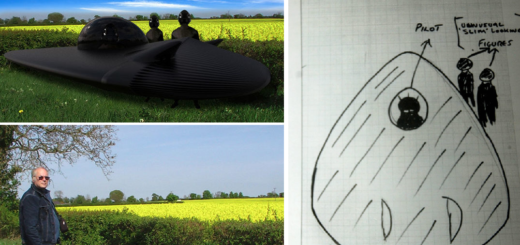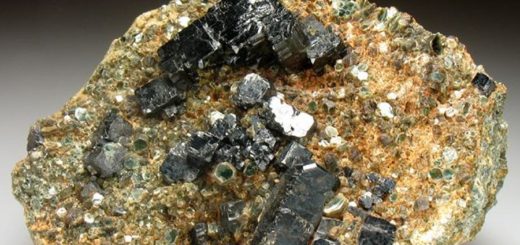The math of time travel revealed: Scientists says we can travel in time

According to a new study, time travel is—mathematically speaking—possible. A researcher has concluded that space should NOT be divided into three dimensions—where time is separated. Instead, four dimensions need to be imagined simultaneously as a space-time continuum in which the different directions are connected.
While time travel has only been possible in popular movies and books, a scientist has found that in reality, there’s more to time travel than what we previously believed.
A researcher has created a new, revolutionary model that reveals—mathematically—time travel is in fact possible. While it seems to work mathematically, experts have yet to come up with the ‘right’ materials to create a working ‘time machine’.
The study was recently published in the IOPscience Journal Classical and Quantum Gravity and argues that mathematically speaking we can travel in time:
In this paper, we present geometry which has been designed to fit a layperson’s description of a ‘time machine’. It is a box which allows those within it to travel backwards and forwards through time and space, as interpreted by an external observer. Timelike observers travel within the interior of a ‘bubble’ of geometry which moves along a circular, acausal trajectory through spacetime. If certain timelike observers inside the bubble maintain a persistent acceleration, their worldlines will close.
Our analysis includes a description of the causal structure of our spacetime, as well as a discussion of its physicality. The inclusion of such a bubble in a spacetime will render the background spacetime non-orientable, generating additional consistency constraints for formulations of the initial value problem. The spacetime geometry is geodesically incomplete, contains naked singularities, and requires exotic matter. (Source)
Ben Tippett, a mathematics and physics instructor at the University of British Columbia’s Okanagan campus has revealed that time travel is at least mathematically possible.
“People think of time travel as something of fiction, and we tend to think it’s not possible because we don’t actually do it. But mathematically, it is possible,” revealed Tippett,
According to a newly published study, Tippet concludes that space should NOT be divided into three dimensions—where time is separated. Instead, Tippett says four dimensions need to be imagined simultaneously as a space-time continuum in which the different directions are connected. Time travel.
Based on Einstein’s theory—the researchers argues that the curvature of space-time is responsible for the curved orbits of the planets in the universe.
The researcher argues that if space-time was not ‘curved’ planets in the universe would travel in a straight line.
Imagine yourself standing next to a MASSIVE STAR. There, space-time geometry becomes curved making all straight trajectories of nearby cosmic bodies to bend, following a curved path around the star.
“The time direction of the space-time surface also shows curvature. There is evidence showing the closer to a black hole we get, time moves slower,” says Tippett. “My model of a time machine uses the curved space-time — to bend time into a circle for the passengers, not in a straight line. That circle takes us back in time.”
For the study, Tippett came up with a mathematical model called Traversable Acausal Retrograde Domain in Space-time or more charismatically called TARDIS. Tippett describes it as a bubble of space-time geometry which is able to carry contents back and forth through space. This ‘bubble’ moves through space-time at a speed greater than the speed of light times 8, which consequently allows it to move backward in time.
“Studying space-time is both fascinating and problematic. And it’s also a fun way to use math and physics,” says Tippett. “Experts in my field have been exploring the possibility of mathematical time machines since 1949. And my research presents a new method for doing it.”
However, while the researcher says its mathematically possible to travel in time, he doubts that anyone will ever build a working time machine in the near future.
“HG Wells popularized the term ‘time machine’ and he left people with the thought that an explorer would need a ‘machine or special box’ to actually accomplish time travel,” Tippett says.
“While it is mathematically feasible, it is not yet possible to build a space-time machine because we need materials – which we call exotic matter – to bend space-time in these impossible ways, but they have yet to be discovered,” concluded Tippett.
Source: Traversable acausal retrograde domains in spacetime
Reference: UBC instructor uses math to investigate possibility of time travel
Featured image: Getty Images



 Creators of mankind
Creators of mankind Description of “Tall white aliens”
Description of “Tall white aliens” Where they came from?
Where they came from? About hostile civilizations
About hostile civilizations The war for the Earth
The war for the Earth “Tall white aliens” about eternal life
“Tall white aliens” about eternal life Video: “Nordic aliens”
Video: “Nordic aliens” Aliens
Aliens Alien encounters
Alien encounters The aliens base
The aliens base UFO
UFO Technology UFO
Technology UFO Underground civilization
Underground civilization Ancient alien artifacts
Ancient alien artifacts Military and UFO
Military and UFO Mysteries and hypotheses
Mysteries and hypotheses Scientific facts
Scientific facts


















